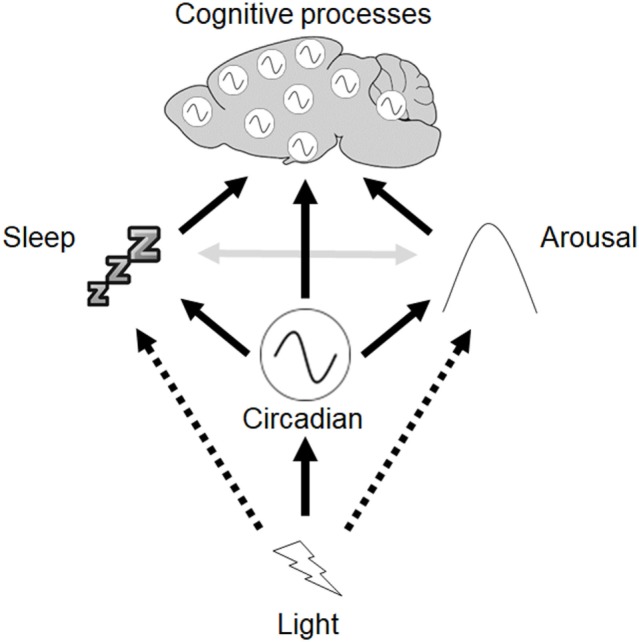Figure 4.

Framework to describe the interactions between circadian rhythms, sleep, and cognition. Light exerts direct effects on the circadian clock in the suprachiasmatic nuclei (SCN), which in turn modulates other rhythmic processes throughout the body, including independent oscillators found in other brain regions. The SCN clock also modulates sleep, and regulates arousal via output to hypothalamic-pituitary-adrenal axis and sympathetic nervous system. Light may also directly regulate sleep as well as arousal (dashed arrows). Reciprocal interactions between sleep and arousal also occur (gray arrows).
